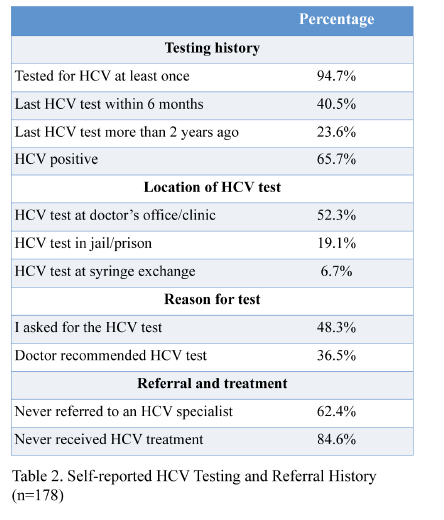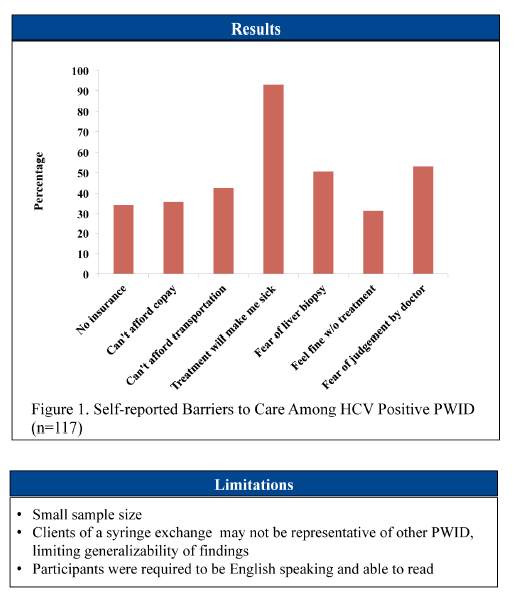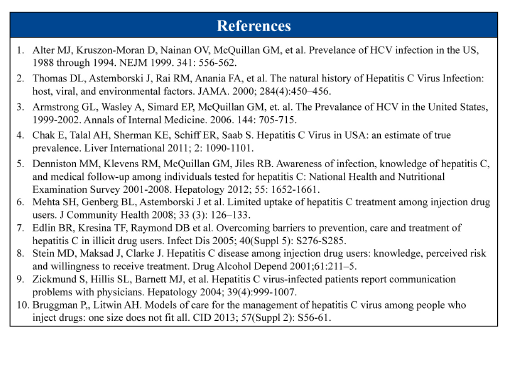| |
HCV positive injection drug users and linkage to care: a missed opportunity........Of the 188 past or current PWID who completed our questionnaire, 95% reported having received at least 1 HCV test in the past......66% reported their HCV status as positive. Of the HCV positive participants, 36% were uninsured, 62% had never seen an HCV specialist, and only 15% had ever received treatment. Multiple subjective access to care barriers were reported by participants.
|
| |
| |
AASLD 2013

Program Abstract
PURPOSE: Within 5 years of beginning to inject, 50-80% of persons who inject drugs (PWID) are infected with hepatitis C virus (HCV). If tested for HCV, only 20% of PWID are further assessed for treatment. While many PWID express a willingness to undergo treatment for HCV, there remain significant obstacles. We aimed to identify barriers to linkage to care among HCV positive PWID attending a Philadelphia syringe exchange.
METHODS: We assessed demographics, HCV testing history, HCV status, utilization of health care services and attitudes about providers and treatment for HCV. Participants were clients of a Philadelphia syringe exchange.
RESULTS: Of the 188 past or current PWID who completed our questionnaire, 95% reported having received at least 1 HCV test in the past. Of those who had been tested, 41% reported that their last HCV test was within 6 months. Sixty-six percent reported their HCV status as positive. Of the HCV positive participants, 36% were uninsured, 62% had never seen an HCV specialist, and only 15% had ever received treatment. Multiple subjective access to care barriers were reported by participants.
CONCLUSIONS: With 94% of the population surveyed reported having been tested for HCV, it is clear that the barriers to care lie in the steps after screening. HCV positive PWID who are not able to engage in subspecialty care have missed an opportunity for education, risk reduction counseling and secondary prevention measures. With more effective and tolerable treatments on the horizon, there is a greater need than ever for addressing the barriers to care among PWID.





|
|
| |
| |
|
|
|